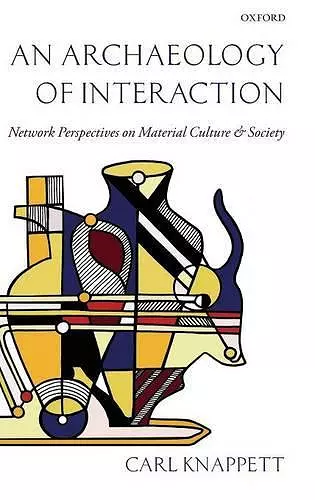An Archaeology of Interaction
Network Perspectives on Material Culture and Society
Format:Hardback
Publisher:Oxford University Press
Published:25th Aug '11
Currently unavailable, and unfortunately no date known when it will be back
This hardback is available in another edition too:
- Paperback£45.99(9780198706939)

Think of a souvenir from a foreign trip, or an heirloom passed down the generations - distinctive individual artefacts allow us to think and act beyond the proximate, across both space and time. While this makes anecdotal sense, what does scholarship have to say about the role of artefacts in human thought? Surprisingly, material culture research tends also to focus on individual artefacts. But objects rarely stand independently from one another they are interconnected in complex constellations. This innovative volume asserts that it is such 'networks of objects' that instill objects with their power, enabling them to evoke distant times and places for both individuals and communities. Using archaeological case studies from the Bronze Age of Greece throughout, Knappett develops a long-term, archaeological angle on the development of object networks in human societies. He explores the benefits such networks create for human interaction across scales, and the challenges faced by ancient societies in balancing these benefits against their costs. In objectifying and controlling artefacts in networks, human communities can lose track of the recalcitrant pull that artefacts exercise. Materials do not always do as they are asked. We never fully understand all their aspects. This we grasp in our everyday, unconscious working in the phenomenal world, but overlook in our network thinking. And this failure to attend to things and give them their due can lead to societal 'disorientation'.
The reader should come away from this book with a new appreciation for network thinking and for the complex relationships between objects (artifacts and assemblages) and things. In a practical sense, network thinking provides new ways of looking at the development of Bronze Age pottery and the spread of Minoan material culture and identity across the Aegean. As Knappett indicates ... it is a solid foundation for the future. * Michael Deal, Mouseion: Journal of the Classical Association of Canada *
Carl Knappett's An Archaeology of Interaction sets the agenda for archaeological studies of networks. This volume traverses different theoretical approaches with astonishing breadth making it an important resource for archaeologists interested in applying a network perspective in their work, as well as for those more generally interested in contemporary material culture studies. * Barbara Mills, University of Arizona *
Carl Knappett's book represents a milestone in the study of archaeological distribution patterns. Network analysis has in recent years become highly influential in the study of past human interaction as represented by material culture. Knappett shows, through the skilful use of a range of case-studies and theoretical standpoints, how the network approach to material culture can shed new and sometimes unexpected light on many aspects of interactions in the ancient past. * Anthony Harding, University of Exeter *
ISBN: 9780199215454
Dimensions: 240mm x 169mm x 26mm
Weight: 548g
264 pages